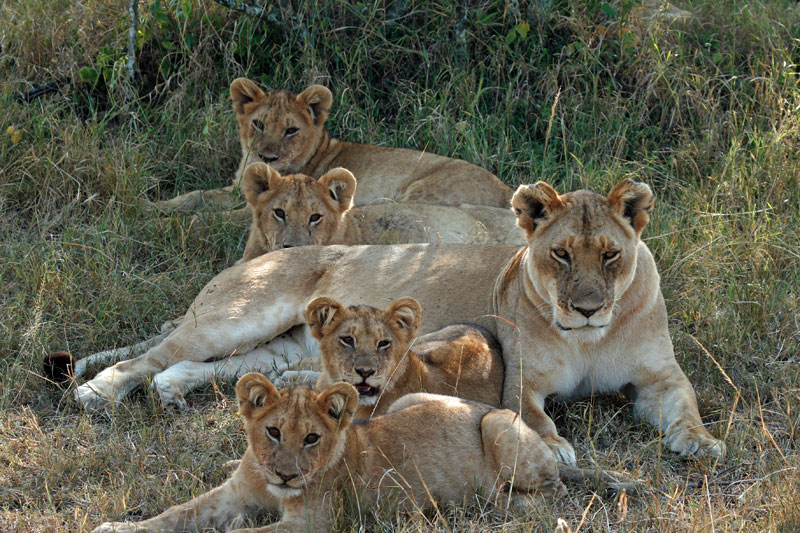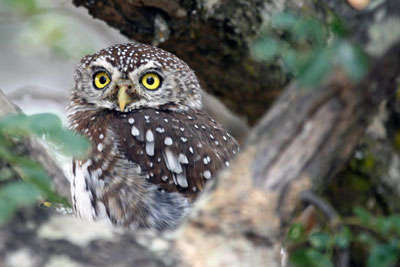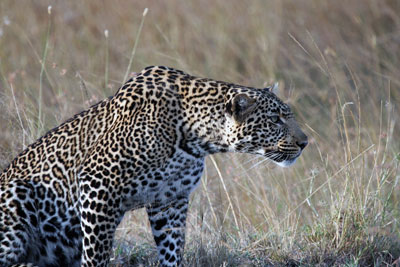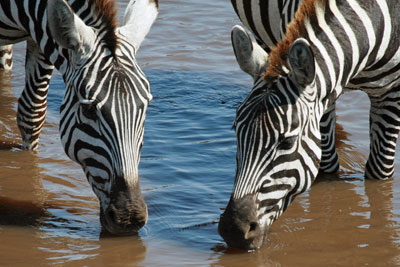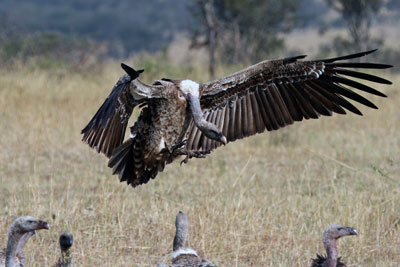Reliving a magical trip to Kenya & Tanzania
This article appears on page 20 of the April 2014 issue.
by Bill Reed; Denton, TX
We boarded a plane in Dallas some 12 hours after our friends, who would be traveling with us, boarded in Winnipeg. We had met them in a chow line on a trip to Russia and instantly hit it off like long-lost friends.
Some years before, we had taken an individually crafted trip to Kenya and Tanzania with Rothschild Safaris (Denver, CO; 800/ 405-9463), and it was magical. The sights, the smells and the sounds of the constant call of the doves, the lions in the night and the hippos in the river seeped into my soul.
We convinced our friends that they needed to do (essentially) the same trip, and a few months and phone calls later we decided to join them.
This 2013 trip, put together by Kimi at Rothschild Safaris, would follow our previous itinerary but in reverse, using different tented camps. Many of the conversations we had while planning the trip were about the details of the various camps and what they had to offer. We made several changes as we learned more about them. Some of the changes were last minute, but that didn’t seem to pose a problem.
Availability at the various camps was more of an issue. The camps are small and there are only so many slots, so start your planning early (eight to ten months in advance).
Our June 25-July 10 tour cost $8,548 per person, excluding international air.
Kenya to Tanzania
We landed in Nairobi, Kenya, with two full days to spend before our tour. Kimi had set us up with a driver and the freedom to go where we wanted. There were some planned stops: the David Sheldrick elephant orphanage (we now sponsor two babies), a tea farm and a place where we could feed giraffes. Our driver, Chewi, was extremely affable, knowledgeable and just comfortable to be with. We requested him for our final day in Africa as well.
On the small plane we took from Nairobi to the camps, we each were allowed 15 kilos of luggage. That turned out to be enough, since laundry service was readily available at all the camps and was usually included in the price. After the first weigh-in, nobody checked anything on the subsequent flights.
By the way, if you want to ride in the copilot’s place, you can just ask.
Landing in Tanzania, we were off to Tarangire National Park.
We stayed at the Tarangire Safari Lodge, which was the most “hotel-like” camp on this trip, with both fixed tents and bungalows plus a permanent lodge area. The calling card for this park is the breathtaking view from its stone veranda overlooking the Tarangire River.
At night, lions could be heard, and both the sunrise and sunset over the rolling hills were impressive.
We guessed we saw about 200 to 250 elephants the day we toured the park. (The first ones were only yards from the camp.) Groups ranged from about 10 to maybe 30, and every herd looked very healthy and had with them several young, from a few months to several years old.
A welcoming stay
From Tarangire we drove to Kisima Ngeda Camp. Here I must put in a disclaimer. I know, and very much like, the owners of this camp. We had been there on our previous trip, and there was something about Nani, the lady who owns this camp, that struck a chord with me. We have stayed in contact ever since, and I have learned about her kids and her husband and their trials and tribulations. That said, I fall back on what our friend said the first night: “Now, this is what I thought fixed-tent camping should be like.”
Nani’s camp is at the end of a long, very dusty road. Getting there is an adventure in itself. They had improved the road considerably since our first trip in 2007, but I wished they had left it full of the innumerable potholes and what passed for bridges. Now it was just dust and packed washboard dirt that made us thankful we had good fillings in our teeth that wouldn’t fall out.
Kisima Ngeda consists of seven tents (each with its accompaniment of little vervet monkeys) that face a large soda lake. Since our previous stay, they had added a swimming pool plus a viewing platform about 20 feet above the ground.
The spring-fed pools are full of tilapia and, if a guest requests fish, Nani will send one of her boys out to catch one.
Nani’s heart is probably too big for her own good. The family funds medical treatment for the area’s Hadza (bushmen), who have virtually no access to health care. And, after helping a young girl put a 5-gallon bucket of water on her head because she was too small to lift it, herself, Nani was key in the establishment of a huge solar electrical system that now pumps water up to the village. She just couldn’t sit back and watch that little girl continue to lug 40 pounds of water up the hill.
I told her we all felt “comfortable” at her place. She responded with, “That’s what everybody says.”
I felt sad to leave because I am sure we will never see her or her boys or husband again, but they have left a little memory time bomb in my mind that goes off every now and then, and that’s a good thing.
If you go, be sure to visit the Hadza and go hunting with them. If you get a chance, go to the Datoga tribe boma and watch them forge bracelets out of metal using two goat stomach bladders and a hammer made from a car spring.
Wildlife experience
The 100-square-mile Ngorongoro Crater, our next stop, must be seen, if possible. One day there is enough, and this was probably the most crowded of all the places we visited, but it was also the only place where we had a chance of seeing all of the Big Five.
We got to the Ngorongoro Plantation Lodge fairly late, and the women in our group ended up wishing we had spent a little less time in the crater and more time at the lodge. It was spectacular and “higher on the hog” than the places we normally stay. They loved it, and, I have to admit, it was a very nice break. Arriving a little sooner would have been a good thing.
A short plane ride delivered us to Serengeti National Park, where we were met by our guide, Nathan, for the drive to Olakira Camp, where we stayed for three nights.
This tented camp consisted of nine guest tents, a dining tent and another tent where guests could just chill out.
Nathan was a closet dirt-track racer, and I loved every minute of it! If we needed to get somewhere to see something interesting, he was up to the task. Ask for him, if you can. You won’t be disappointed.
We waited at the Mara River, where thousands (probably more like tens of thousands) of wildebeests had gathered, but they could not make up their minds to cross — nobody really wants to be the first to tempt the crocodiles, after all — so we headed back to camp for lunch. Halfway back, Nathan got word on the radio that the crossing had started.
The young couple in the backseats spent half their time in the air, but we made it in time to see our first of three crossings.
I said I wanted to see the crocodiles do their thing, but once was definitely enough. My wife buried her head in her hands and stuck her fingers in her ears. After that, everybody rooted for the wildebeests, and it seemed to work.
There is not space here to adequately describe Olakira Camp, but, suffice it to say, this place was excellent. If you ask about the food or service or personal attention, the answer will be the same. Stay there!
The plan at the camps included twice-daily game drives. Some of them started early, with breakfast in the bush, and went all day. Every game drive included wine — and plenty of it!
It is hard to beat sitting on a rock under an acacia tree watching wildebeests, zebras, gazelles and impalas while enjoying a glass of merlot.
Maasai Mara
From there, it was another short flight back to Kenya and on to the Maasai Mara. The Maasai Mara and the Serengeti are one large area separated by the border between Kenya and Tanzania. The total area is huge (6,283 square miles), about the size of the state of Hawaii.
Because Olakira is in Tanzania and Rekero Camp, our next accommodation, was in Kenya, we had to go through Customs, which involved a fairly long van ride to get our passports stamped, followed by a much shorter van ride to park under the shade of a tree to wait for our plane.
The rides, in and of themselves, were interesting, since we went through many small towns and got to see the day-to-day activities.
If you want to buy something to take home, ask your driver for the best places and I’m sure he will stop. And if you don’t ask, he will not take you to curio shops — a really nice feature of this sort of trip. These are not shopping trips.
Rekero Camp was probably the best camp on this trip. (Ask for Pius as a guide.) That said, there is not a single one I would not recommend, since each had something special that was not available in other locations. Each simply was different.
To get a good feel for what the area has to offer, you need to see the dry desert (Kisima Ngeda), the vast grass plains (Serengeti) and the concentrated populations of animals in the Ngorongoro Crater and the Maasai Mara.
The policy at Rekero Camp of not walking in front of anyone’s tent gives you the feeling of isolation. The tent openings face a small but deep river that flows all year, and on the opposite side, a wide expanse of grass stretches to the horizon.
The staff always greeted us when we arrived and was there to see us off when we went on our game drives. The supply of wine and beer was constant.
At all camps (except Kisima Ngeda, where there aren’t any lions), we were escorted to and from our tents after dark.
Reflections
This was our third trip to Africa. Africa gets in your blood and makes you want to go back. There is no place in the world where you can get the same experience.
It has been said (and I firmly believe it) that it is better to spend your money on memories than on things. My things just get old and, often, in the way. My memories just seem to get better. They lie buried somewhere in my brain and burst like little time bombs when I least expect it, making me smile.
I see those little warthogs dart off into the grass, their tails held high like little flags; the lions asleep under a bush; the giraffes wrapping their long tongues around the spike-laden acacia branches, or the huge elephants with their little ones moving silently through the grass. I see the lilac-breasted rollers, the vultures, the kori bustards and those ever-present, ever-calling doves, who provide the background music to Africa.
Will we go back? I hope so. Would we go with the same company? I am sure of it.

